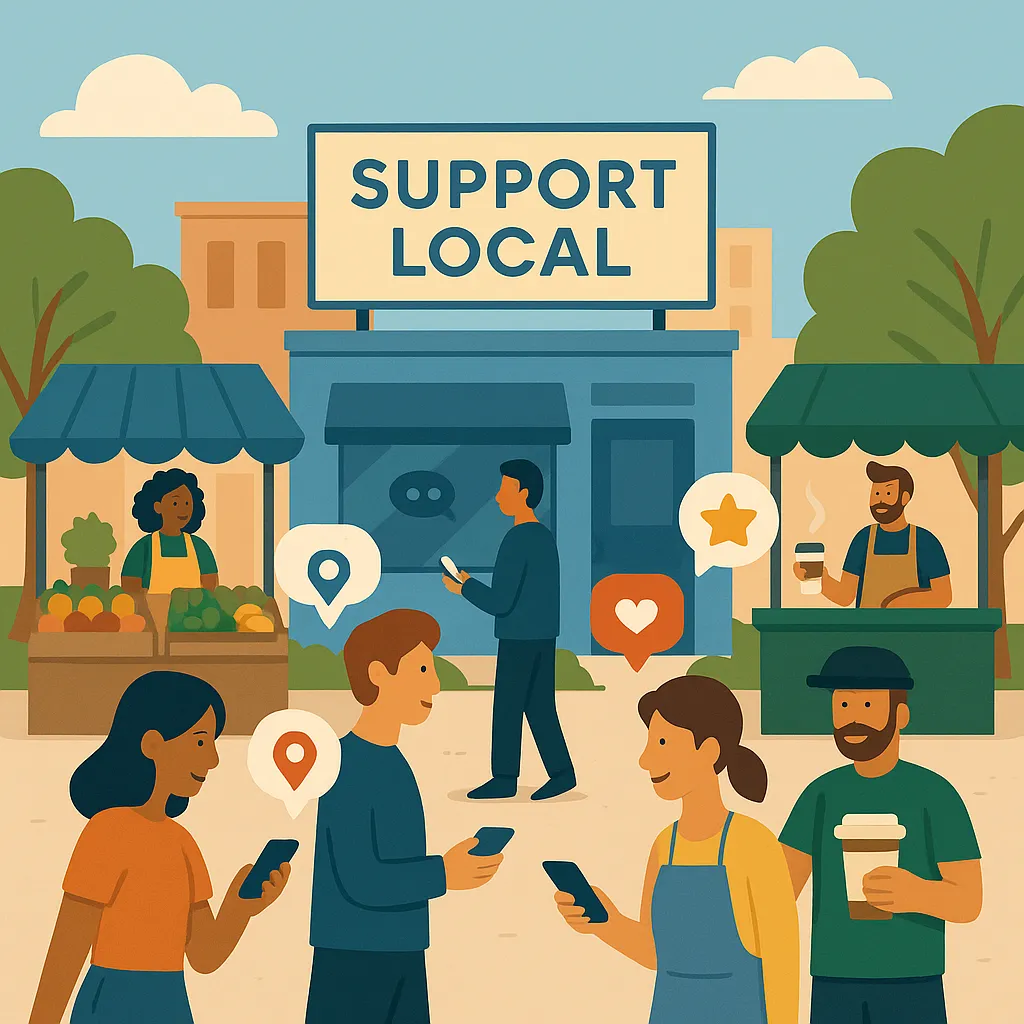In an era where customers are overwhelmed with content, ads, and algorithms, there’s one strategy that continues to cut through the noise: authentic community-building. For small and local businesses, this isn’t just a feel-good idea — it’s a strategic advantage.
Building a community around your brand isn’t the same as building an audience. Audiences observe. Communities engage. They share your values, champion your message, and ultimately become your most loyal customers and advocates.
So what does it take to create real community in 2025? Let’s break it down.
1. Start with Values, Not Just Content
Community starts with shared beliefs. It’s not enough to post consistently — the why behind your brand has to be clear.
Whether you run a wine bar that celebrates local terroir or a yoga studio that emphasizes mental wellness, your brand values should inform everything you share. Talk about your mission. Highlight stories that reinforce what you care about. Show your audience that you're more than a product or service — you're a purpose they can rally around.
People want to belong to something meaningful. Give them a reason to see themselves in your brand.
2. Be Present Where It Counts
You don’t need to be everywhere — just where your community already is.
For example, a local creative studio might thrive on Instagram, where visuals and behind-the-scenes posts shine. A boutique consultancy may find more success building relationships on LinkedIn. A neighborhood bakery could grow a loyal following through Facebook groups, engaging with families and locals who want to support small business.
Whatever platform you choose, don’t just post and ghost. Show up. Respond to comments. Like and share your followers’ posts. Community is built in the replies as much as in the feed.
3. Encourage Participation and Co-Creation
Communities aren’t built from the top down — they thrive on participation.
Ask for input. Run polls. Invite people to share their own stories related to your business or industry. Feature user-generated content, and make your followers feel like they’re part of something bigger. When people see their voice reflected in your brand, they feel more invested.
Consider hosting events — virtual or in-person — that bring your audience together. Even something simple like a “Customer Spotlight” series can spark connection and conversation.
4. Prioritize Consistency Over Perfection
The most successful communities aren’t curated to perfection — they’re consistent and real.
Post regularly. Stick to your voice. Be human in your responses. Even if you don’t have a polished content studio, showing up consistently matters more. Over time, that steady presence builds trust, and trust builds loyalty.
This doesn’t mean you can’t evolve or improve. But it does mean being transparent and relatable along the way.
5. Don’t Sell Every Time You Speak
Sales will come — but only if you earn your audience’s trust first.
Focus on serving your community before trying to sell to them. Share helpful tips, industry insights, local news, and stories that matter to your audience. Make 80% of your content about adding value, and let the remaining 20% gently guide people toward your offerings.
The result? A community that buys from you not because they were pressured — but because they feel connected.
Community Isn’t a Campaign — It’s a Commitment
Authentic community-building isn’t a one-off tactic. It’s a long-term strategy that fosters loyalty, sparks word-of-mouth growth, and creates a brand that customers want to support.
In today’s digital landscape, especially for local and service-based businesses, the brands that win are the ones that listen, respond, and include their customers in the journey.
If you're ready to build a brand people don’t just buy from, but believe in — community is where it starts.





